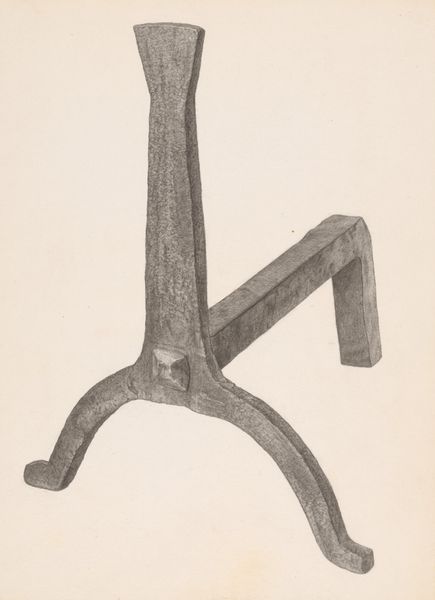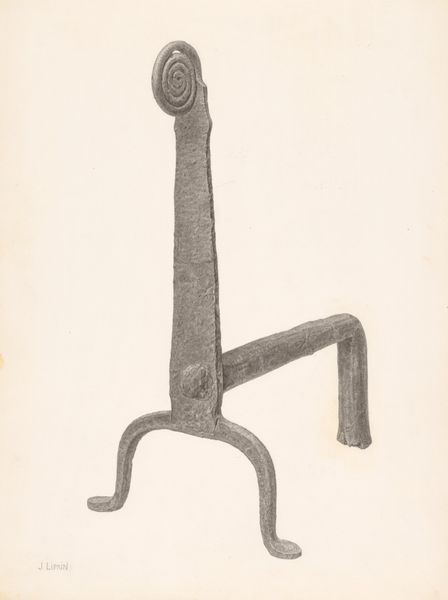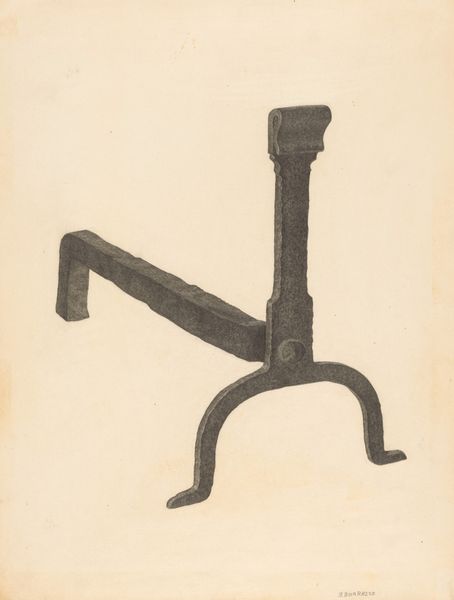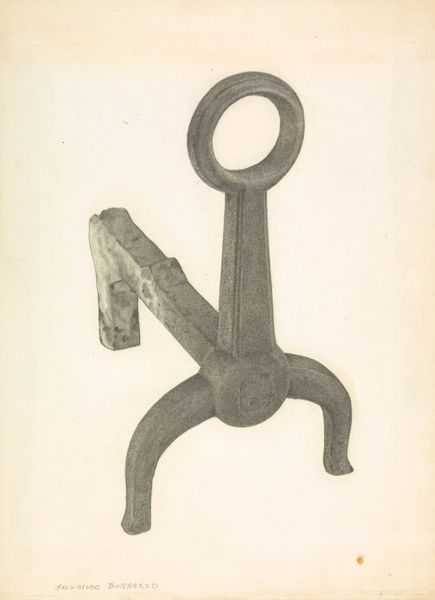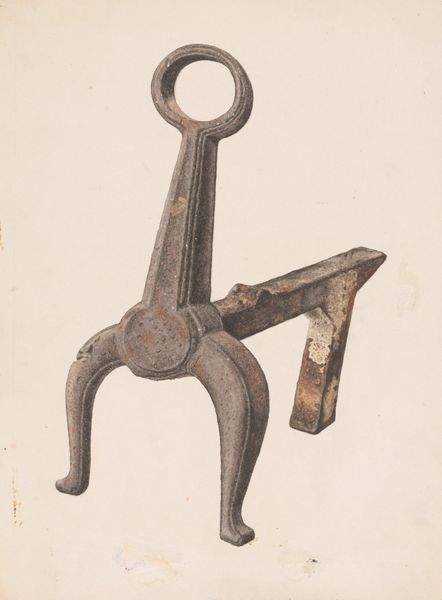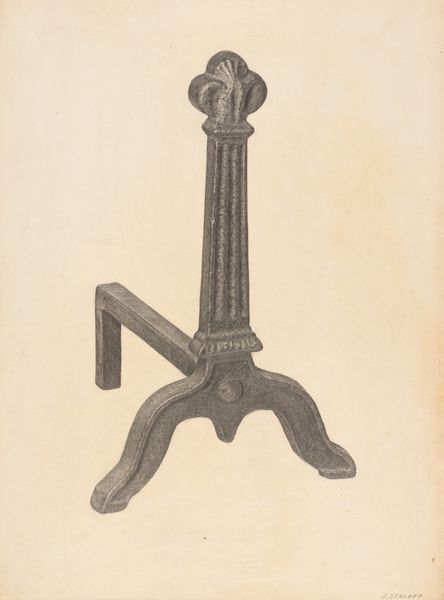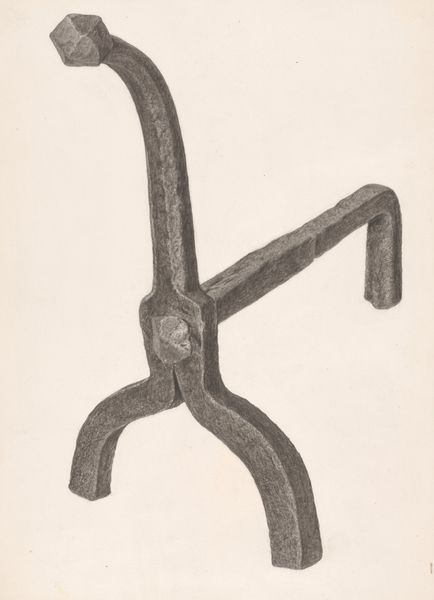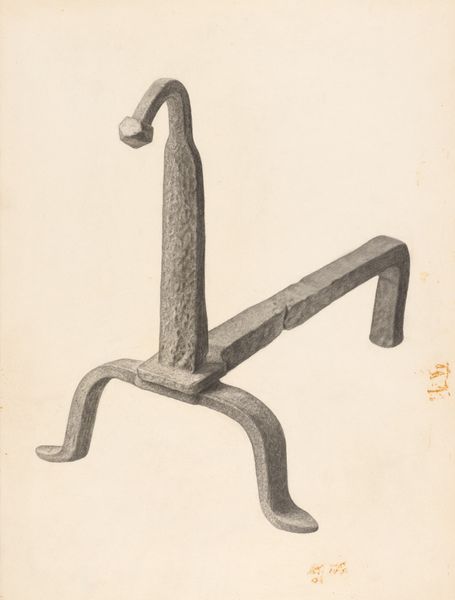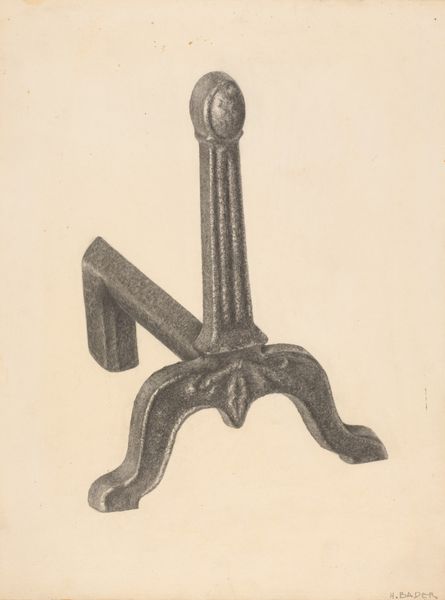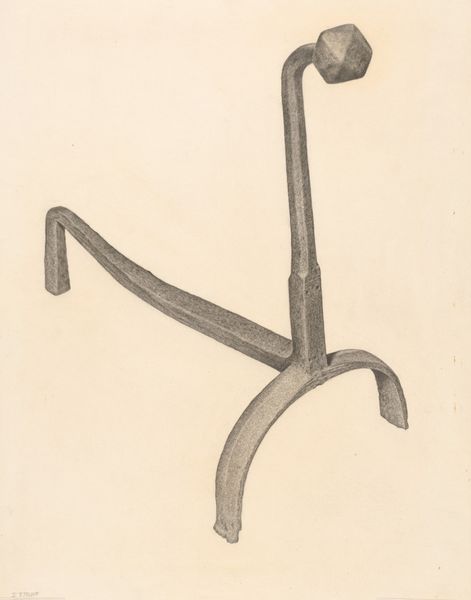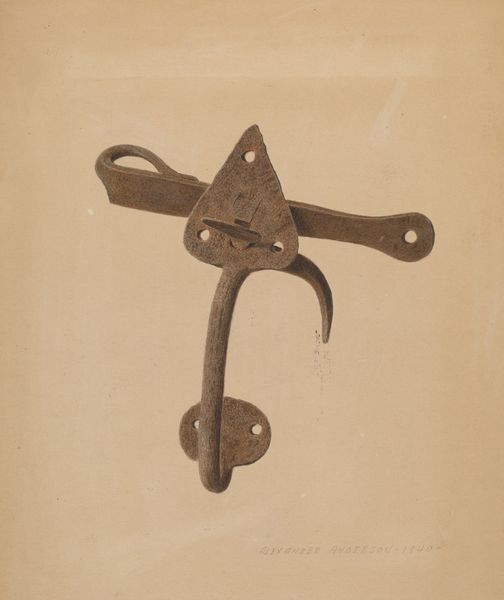
drawing, pencil
#
drawing
#
pencil
#
line
#
realism
Dimensions: overall: 40.7 x 30.2 cm (16 x 11 7/8 in.) Original IAD Object: 12 3/4" high; 12" wide; thickness of shaft: 3/8"; width of shaft: 1 5/8"
Copyright: National Gallery of Art: CC0 1.0
Albert Taxson made this drawing of an andiron sometime between 1855 and 1995 using graphite on paper. Andirons, those humble supports for logs in a fireplace, speak to the heart of domestic life and comfort, yet Taxson's rendering elevates this utilitarian object to a subject worthy of artistic attention. Consider the time when it was drawn, the late 19th to late 20th century, a period marked by rapid industrialization and urbanization in America. This drawing could be a quiet comment on simpler, pre-industrial times, a longing for the warmth and authenticity of the hearth in an increasingly mechanized world. The artist's choice to depict it in graphite, a medium that allows for precise detail and tonal variation, further emphasizes the andiron's form and texture, inviting us to appreciate its craftsmanship. To truly understand this drawing, one could delve into the history of decorative arts and the Arts and Crafts movement, which championed handcrafted objects as a response to mass production. Understanding the institutional context in which Taxson worked will help us to understand the social role of this piece.
Comments
No comments
Be the first to comment and join the conversation on the ultimate creative platform.
